Walk across the field, scanning the area for cows or other residents. Enjoy the view across the fields to the hilltop town of Castelo de Vide. Feel the wind in your face as you walk through the low meadowland. As you reach the top of the small rise, the stones appear before you. Towering over the field, the enormous dolmen sits proudly in the middle of a wide, flat pasture. These enormous stones have stood here for millennia, watching the comings and goings of countless generations. They’ll still be here long after you leave. Pass your hands over the face of the granite slabs, touching antiquity.
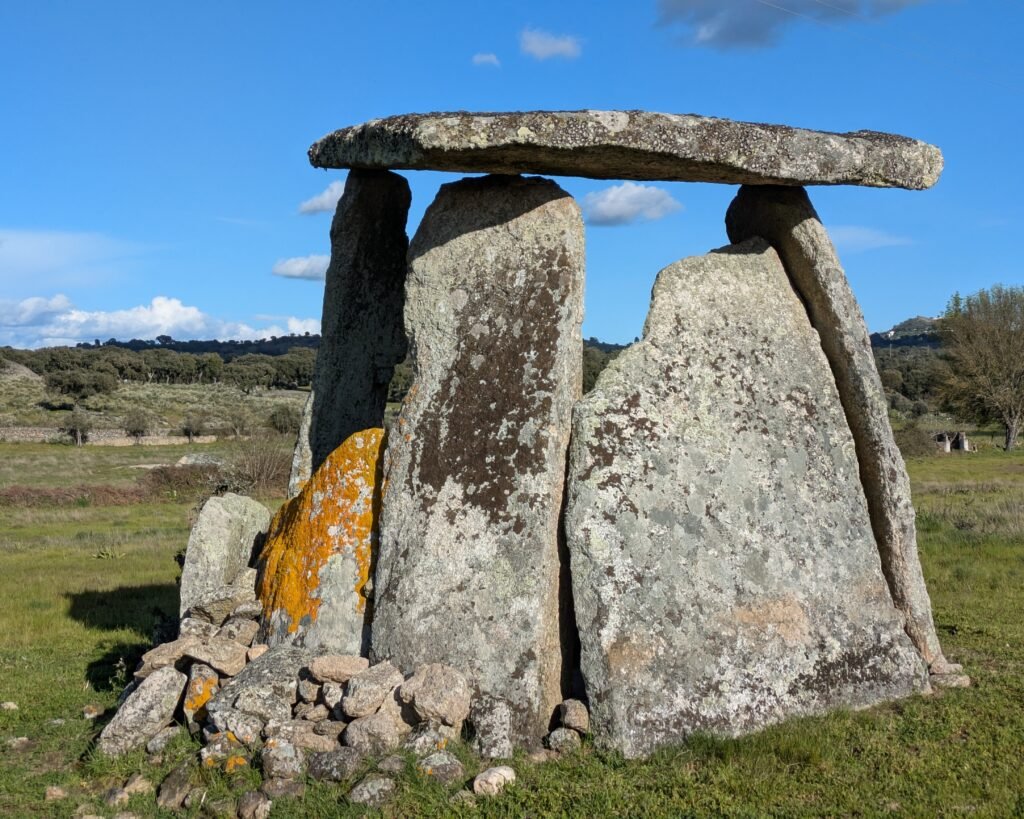
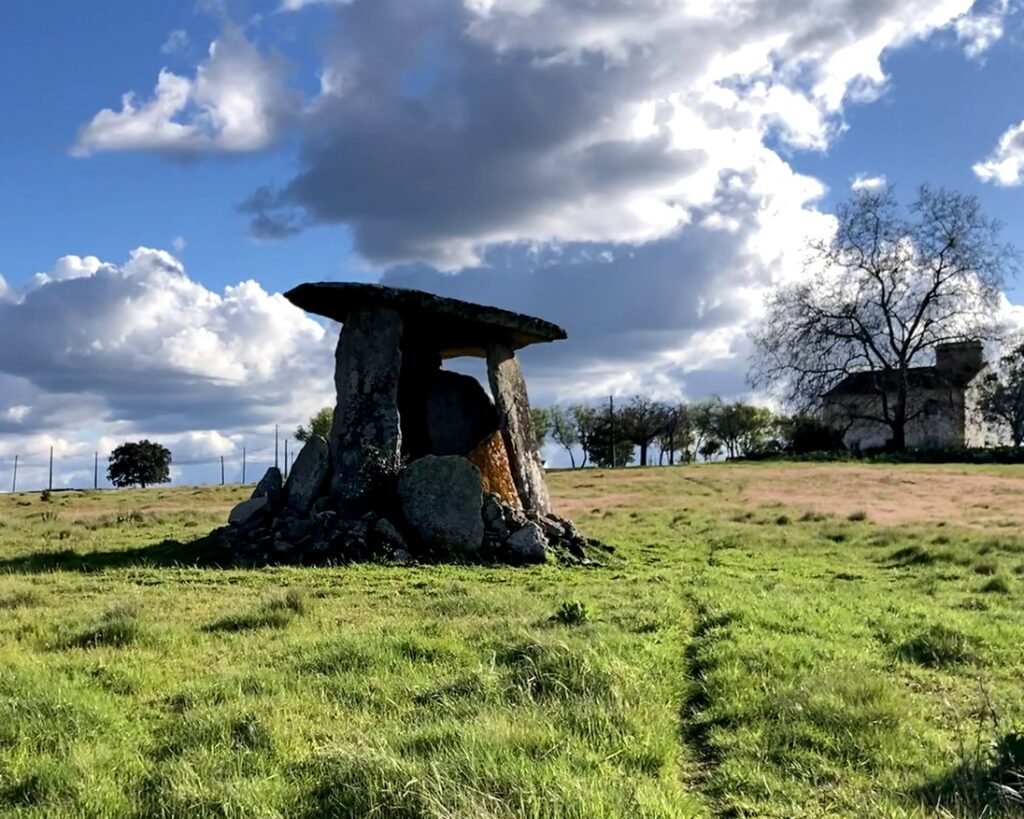

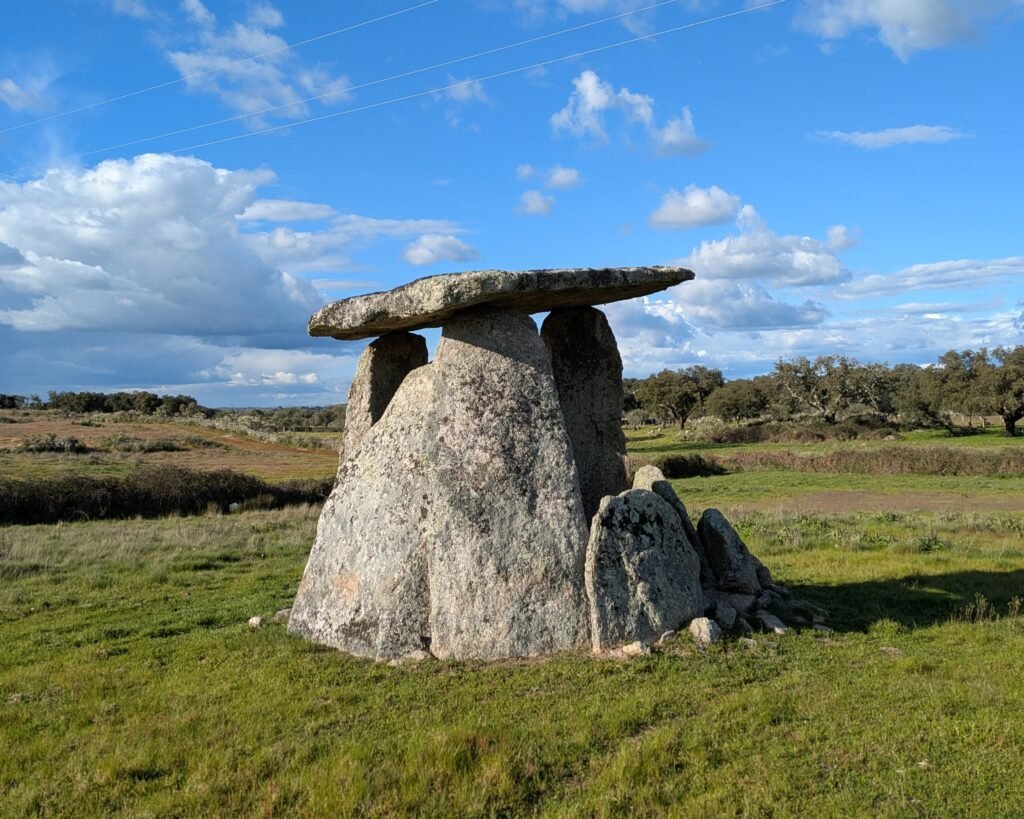
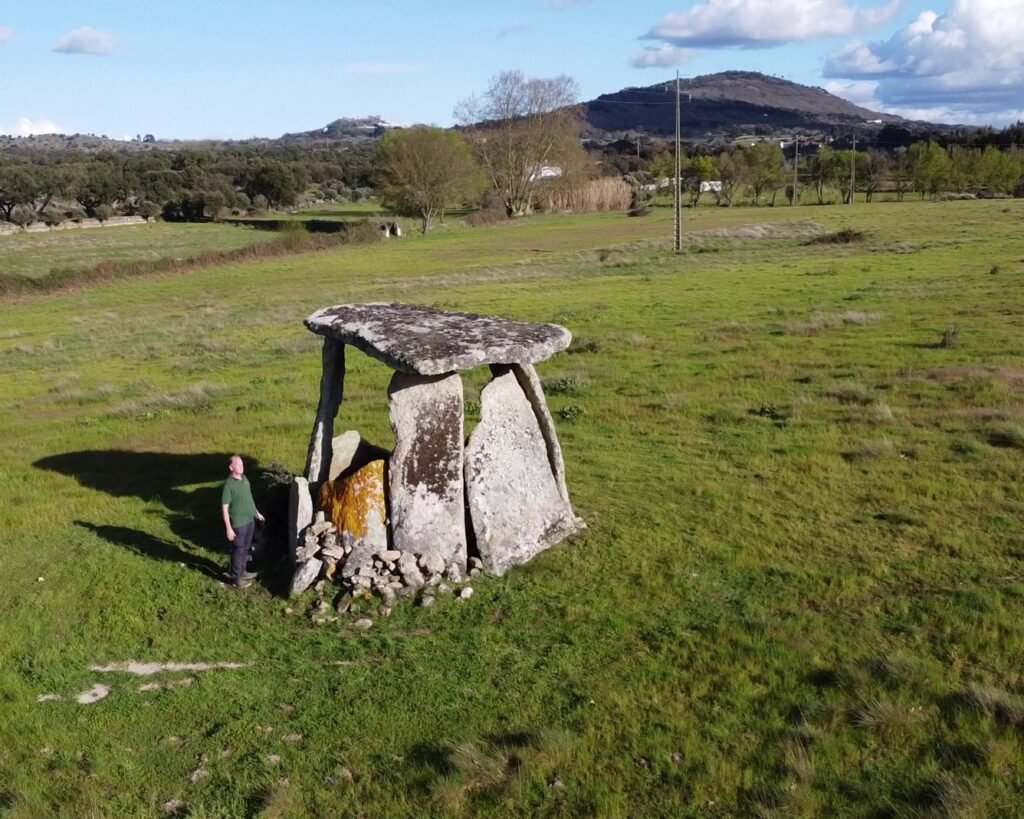
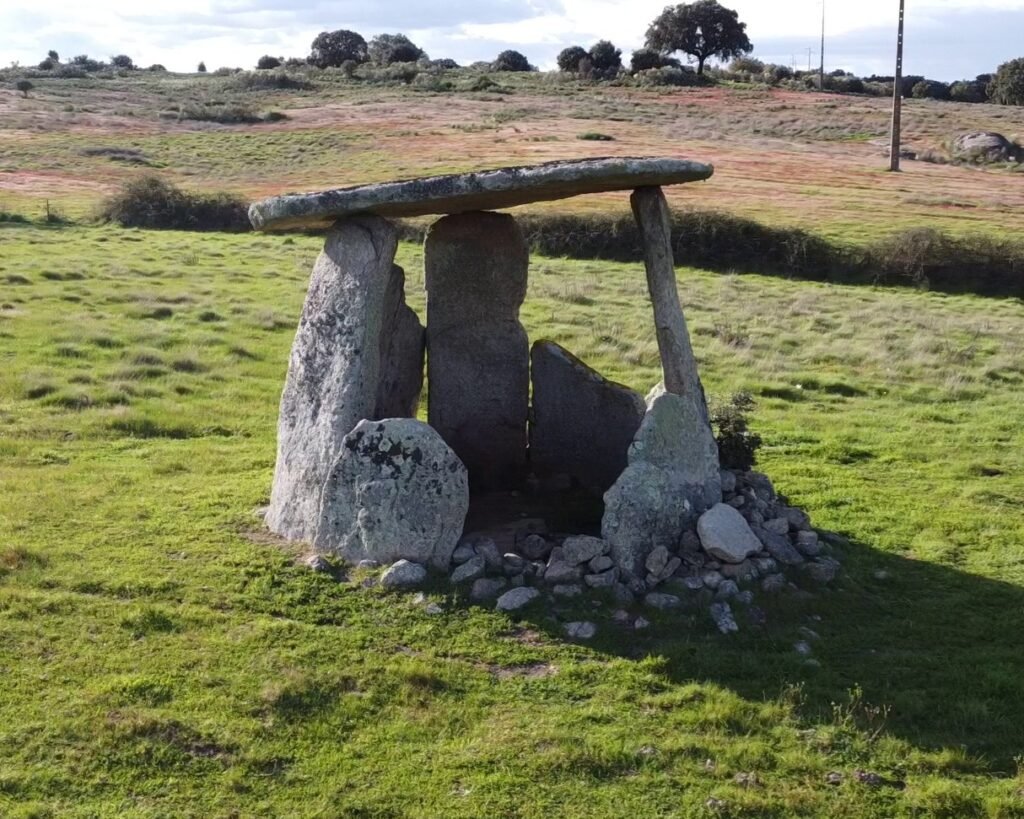
This is an enormous anta (“dolmen”): over 3 meters tall. It has a polygonal chamber (3.5m in diameter) which originally had 7 orthostats (upright stones, esteios in Portuguese). 3 remain whole, while the others are broken. No trace of the corridor was found. The smaller stones surrounding it suggest that this might have been covered with a stone cairn, something unusual for Portuguese antas.
The first record of any archaeological work on the anta was in 1868 by Francisco Pereira da Costa. He reported that his excavations “did not produce any notable results.” It was declared a National Monument in 1910. It was explored by Georg and Vera Leisner in the 1950s and had some valorisation work done on it by the Town Council in the 1980s. There are little formal records of excavations or any artefacts found.
The construction style puts this as being built in the Late Neolithic and used into the Chalcolithic period, 3500 – 2000 BC.
Location
The Anta da Melriça is in the Alto Alentejo region: district of Portalegre, municipality of Castelo de Vide, parish of Santiago Maior. It’s in a farm pasture along the EN246, about 5km west of Castelo de Vide (heading towards Nisa/Alpalhão).
Access
The anta is on private land. Be respectful.
From the EN246, turn North on the M1007. There is a small road on the right indicating the way to the anta. That road is narrow and there’s not much space to turn around. You can drive to the gate, but you may have to reverse out or go much further beyond to turn around. There is a wide area just off the M1007, where it is easiest to park a car.
The gate for the anta is about 350m from the M1007. It’s not locked, but there are cords to fasten it. Make sure you close the gate behind you. Cross the field and then go through another gate (fastened with wire) to reach the anta. It’s a relatively easy walk through the fields.
Signage
The sign on the M1007 is for the “Barragem da Póvoa.” Head north on the road for about 190m. There is a sign for the anta on the right. Turn down that road, and about 350m along that road, there is a gate with another sign for the anta on the right.

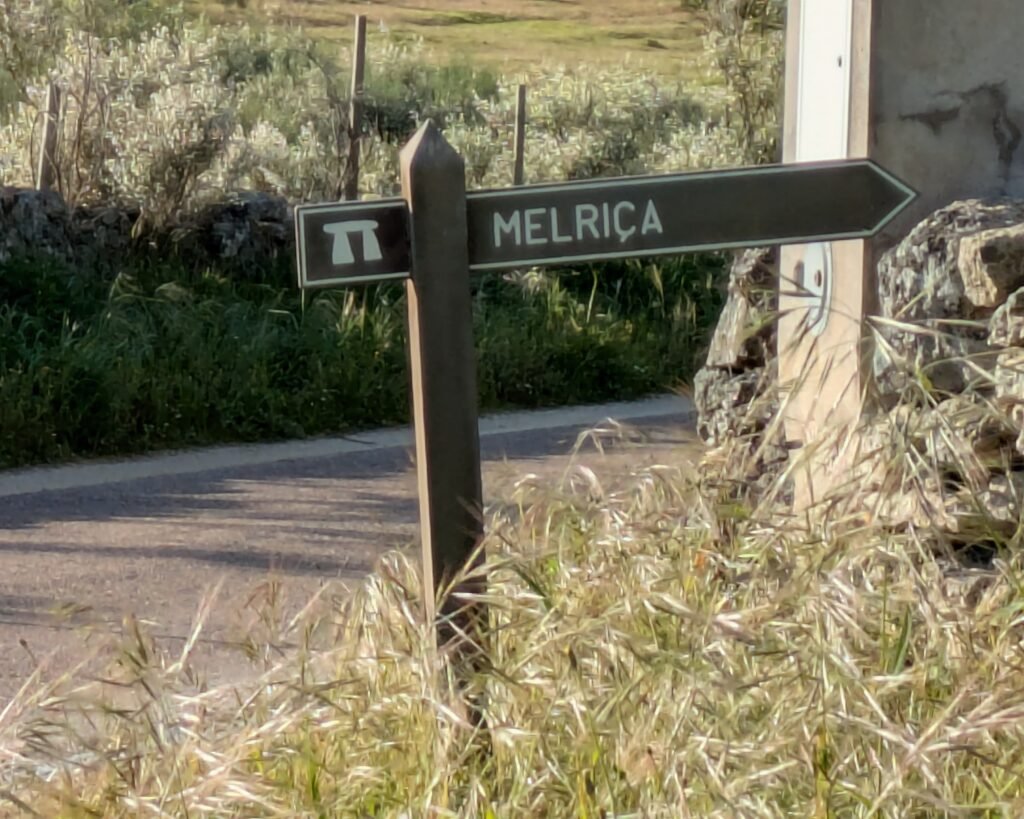
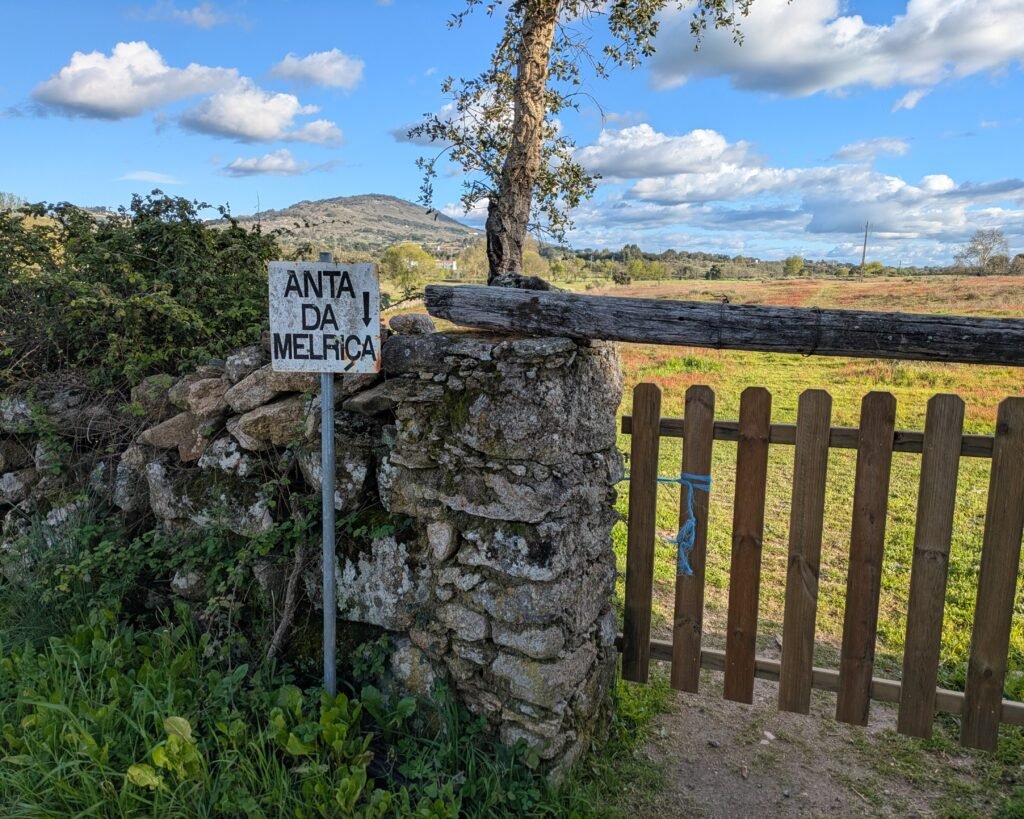
Links
- Entry (in English) in the Megalithic Portal
- Description (in Portuguese) from Archaeologist’s Portal of Directorate-General of Cultural Heritage
- Designation (in Portuguese) as a National Monument by the Directorate-General of Cultural Heritage
- Detailed information (in Portuguese) in the database of Heritage Properties by the Directorate-General of Cultural Heritage
Nearby
There are many prehistoric sites in the area of Castelo de Vide. The closest (about 3km along the EN246 towards Portalegre) is the Anta do Sobral.
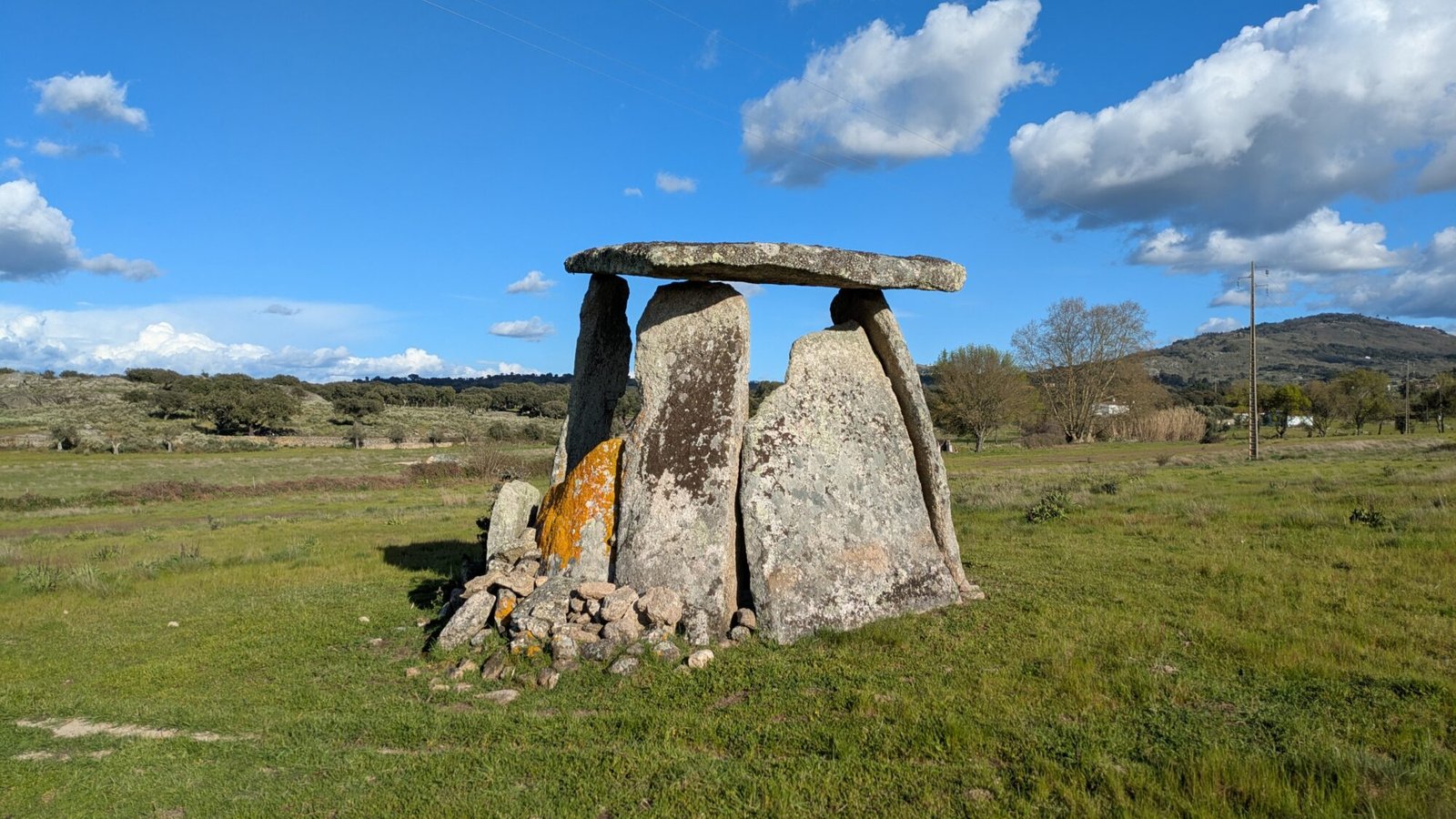
Pingback:Anta do Sobral - Prehistoric Portugal